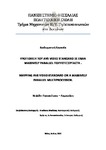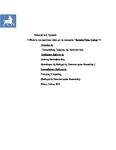| dc.description.abstract | The advent of 4K and 8K resolutions in cameras and TV sets, posed a challenge to Video on Demand (VoD) and live streaming industry since the network overhead compared to FullHD was multiplied. For this reason, new video coding standards were launched as successors to the ageing H.264/AVC that dominated the DVD era. Arguably, the most prominent examples of the new generation video coding standards are the High Efficiency Video Coding (HEVC) standard and the recently launched AV1. Regardless, of the related debate on the comparative performance of HEVC and AV1, both standards promise increased compression ratios, for the same quality, compared to H.264/AVC. Nevertheless, the required performance (particularly in 4K/8K) is achieved at the expense of significantly large computational time. To ameliorate the situation, parallel processing techniques can be used at various levels. Of particular interest, are coarse grained primitives that split a frame into separately codeable areas, since they are trivially parallelizable and can be used in combination with finer grained methods, e.g., at motion estimation or transformation levels. In this paper we turn our interest into tile parallelization, which was introduced by HEVC and also adopted by AV1. Most of the existing works compare the potential performance of HEVC against AV1 in coding efficiency terms assuming no parallel settings. On the contrary, our focus is to characterize the effects of tile partitioning in video coding performance, particularly for the AV1 standard, and compare the findings against HEVC. © 2018 Association for Computing Machinery. | en |




